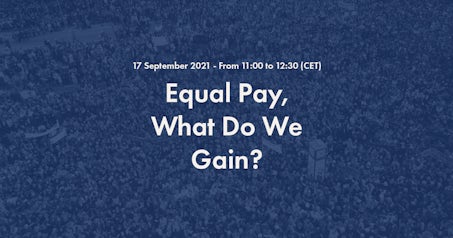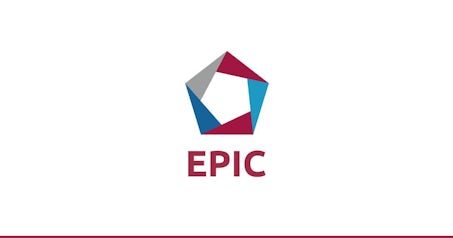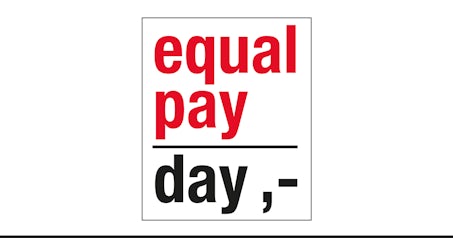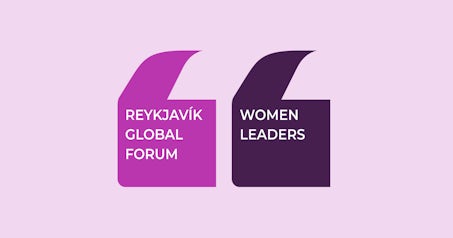Evróputilskipun um gagnsæi í launum | Sækja rafbók hér.
Mæla launabilið

Launagreiningar
Með því að skoða hvaða þættir hafa áhrifa á laun geturðu tekið betri ákvarðanir í framtíðinni.
PayAnalytics hugbúnaðurinn
Fáðu góða yfirsýn yfir launastrúktúr fyrirtækisins, skýra mynd af dreifingu starfsfólks, framkvæmdu launaúttektir, fylgdu reglugerðum og lokaðu launabilum - allt í einum hugbúnaði.
Launagreiningar
Skoðaðu þá þætti sem hafa áhrif á laun og taktu góðar ákvarðanir.
Virðismiðaður samanburður
Berðu saman mismunandi störf með tilliti til "jöfn laun fyrir jafn verðmæt störf".
Jafnréttisvísar
Framkvæmdu greiningar á starfsmannahópnum og fáðu innsýn í fjölbreytileika vinnustaðarins.
Hækkunartillögur
Fáðu sérsniðnar hækkunartillögur með PayAnalytics, byggðar að þínum þörfum.
Skýrslur
Fáðu hjálp við að uppfylla kröfur um skýrslugjöf, auk sveigjanleika til að útbúa sérsniðnar skýrslur.
Launaráðgjafinn
Fáðu aðstoð við að taka góðar launaákvarðanir og viðhalda launajafnréttinu.
Gagnastjórnun
Sjáðu launastrúktúrinn þinn myndrænt, og gerðu þær gagnabreytingar sem þú þarft.
Starfsmat
Berðu saman ólík störf og eiginleika starfsfólks byggt á stöðluðum og hlutlausum forsendum.
Aðgangsstjórnun
Stjórnaðu aðgöngum notenda eða búa til notendahlutverk sem samnýta aðgangsstillingar.
Nýtt
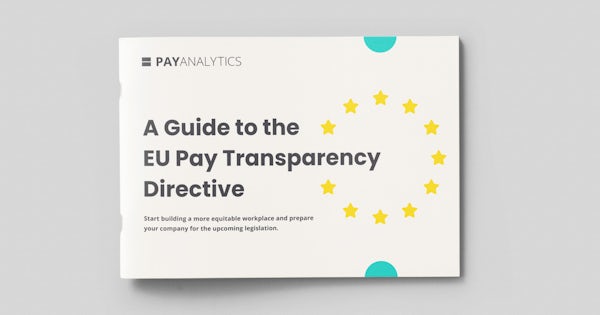
Ný Evróputilskipun um gagnsæi í launum
ESB hefur samþykkt nýja tilskipun um launagagnsæi. Aðildarríki ESB og EES þurfa að leiða hana í lög fyrir mitt ár 2026.
Yfirlit yfir fræðsluefni
Fræðsluefni um meðal annars launajafnrétti, launagagnsæi og fjölbreytileika og inngildingu (DEI).
Leiðarvísar
Við höfum tekið saman leiðarvísa um launajafnrétti, launagagnsæi og margt fleira.
Greinar og blogg
Greinar um launa- og vinnustaðajafnrétti, launagagnsæi, hvernig á að miðla upplýsingum um launajafnrétti og margt fleira.
Staðbundnar kröfur
Listi af kröfum sem gerðar eru til fyrirtækja um launajafnrétti í mismunandi löndum og landsvæðum.
Coffee Talk hlaðvarpið
Margrét Bjarnadóttir og Henrike von Platen fara yfir það nýjasta í launajafnréttis málum á 8 mínútum.
Árangurssögur viðskiptavina
Lestu um viðskiptavini sem hafa náð árangri með PayAnalytics.

Sameining PayAnalytics og beqom
PayAnalytics og svissneska hugbúnaðarfyrirtækið beqom hafa náð samkomulagi um kaup beqom á öllu hlutafé í PayAnalytics. Kaupin eru mikilvæg viðurkenning á lausn PayAnalytics sem er leiðandi á heimsvísu.
Um okkur
Hugbúnaðurinn okkar er byggður á yfir áratug af rannsóknum og þróun af verðlaunuðum prófessorum, launjafnréttissérfræðingum og verkfræðingum.
Störf
Viltu vinna með okkur? Við erum stöðugt að stækka.
Fréttir
Nýjustu fréttir um fyrirtækið, viðburði, árangurssögur viðskiptavina, fréttatilkynningar og margt fleira.
Vörumerki
Yfirlit yfir vörumerki PayAnalytics, verðlaun og sögu fyrirtækisins.
Samstarfsaðilar
Við vinnum m.a. með ráðgjafastofum, lögfræðisstofum og vottunaraðilum.
PayAnalytics hugbúnaðurinn
Fáðu góða yfirsýn yfir launastrúktúr fyrirtækisins, skýra mynd af dreifingu starfsfólks, framkvæmdu launaúttektir, fylgdu reglugerðum og lokaðu launabilum - allt í einum hugbúnaði.
Launagreiningar
Skoðaðu þá þætti sem hafa áhrif á laun og taktu góðar ákvarðanir.
Virðismiðaður samanburður
Berðu saman mismunandi störf með tilliti til "jöfn laun fyrir jafn verðmæt störf".
Jafnréttisvísar
Framkvæmdu greiningar á starfsmannahópnum og fáðu innsýn í fjölbreytileika vinnustaðarins.
Hækkunartillögur
Fáðu sérsniðnar hækkunartillögur með PayAnalytics, byggðar að þínum þörfum.
Skýrslur
Fáðu hjálp við að uppfylla kröfur um skýrslugjöf, auk sveigjanleika til að útbúa sérsniðnar skýrslur.
Launaráðgjafinn
Fáðu aðstoð við að taka góðar launaákvarðanir og viðhalda launajafnréttinu.
Gagnastjórnun
Sjáðu launastrúktúrinn þinn myndrænt, og gerðu þær gagnabreytingar sem þú þarft.
Starfsmat
Berðu saman ólík störf og eiginleika starfsfólks byggt á stöðluðum og hlutlausum forsendum.
Aðgangsstjórnun
Stjórnaðu aðgöngum notenda eða búa til notendahlutverk sem samnýta aðgangsstillingar.
Yfirlit yfir fræðsluefni
Fræðsluefni um meðal annars launajafnrétti, launagagnsæi og fjölbreytileika og inngildingu (DEI).
Leiðarvísar
Við höfum tekið saman leiðarvísa um launajafnrétti, launagagnsæi og margt fleira.
Greinar og blogg
Greinar um launa- og vinnustaðajafnrétti, launagagnsæi, hvernig á að miðla upplýsingum um launajafnrétti og margt fleira.
Staðbundnar kröfur
Listi af kröfum sem gerðar eru til fyrirtækja um launajafnrétti í mismunandi löndum og landsvæðum.
Coffee Talk hlaðvarpið
Margrét Bjarnadóttir og Henrike von Platen fara yfir það nýjasta í launajafnréttis málum á 8 mínútum.
Árangurssögur viðskiptavina
Lestu um viðskiptavini sem hafa náð árangri með PayAnalytics.
Um okkur
Hugbúnaðurinn okkar er byggður á yfir áratug af rannsóknum og þróun af verðlaunuðum prófessorum, launjafnréttissérfræðingum og verkfræðingum.
Störf
Viltu vinna með okkur? Við erum stöðugt að stækka.
Fréttir
Nýjustu fréttir um fyrirtækið, viðburði, árangurssögur viðskiptavina, fréttatilkynningar og margt fleira.
Vörumerki
Yfirlit yfir vörumerki PayAnalytics, verðlaun og sögu fyrirtækisins.
Samstarfsaðilar
Við vinnum m.a. með ráðgjafastofum, lögfræðisstofum og vottunaraðilum.
- Viðburður
Discussions on fair pay practices, new research on gender and pay, and challenges in building fair compensation for startups.
- Myndband
Level the Paying Field is a Canadian podcast where issues related to economics, equity, women, work and money are discussed. Margret Bjarnadottir from PayAnalytics was a guest on their latest episode, entitled International Perspectives.
- Fréttatilkynning
PricewaterhouseCoopers ehf. (PwC) og PayAnalytics ehf. hafa gert með sér samkomulag um samstarf sem snýr að aðgengi niðurstaðna Markaðslauna PwC í kerfi PayAnalytics.
- Frétt
On Friday September 17th 2021 (from 11:00 to 12:30 Paris Time), the Government of Iceland and OECD will be hosting an online-event where Margrét Vilborg, one of PayAnalytics' founders, will be speaking. After registering (registration is over), you will receive a confirmation email containing information about joining the meeting.
- Myndband
In this talk presented at Advania's Fall Conference 2021 Dr. Margrét Vilborg Bjarnadóttir sheds light on the steps needed to ensure the fair application of AI in HR and discusses the application of data-informed decision support in the pay equity space.
- Frétt
We are proud to have been added as the 47th member of EPIC (Equal Pay International Coalition) where we join members ranging from governments and international organizations to private sector initiatives.
- Frétt
Two years ago, PayAnalytics won the Wharton People Analytics Startup competition. This year, our founders are back, with our scientific collaborator Dr. David Ross as the winners of the White Paper competition.
- Frétt
Víðir Ragnarsson hefur hafið störf hjá PayAnalytics og mun leiða ráðgjöf í jafnlaunamálum til erlendra viðskiptavina PayAnalytics og uppbyggingu á fræðsluefni.
- Frétt
Icelandic maker of biosimilar-medicines and PayAnalytics user, Alvotech, has received an Equal Pay Certification in Iceland. Following the Icelandic certification they will set the focus on fulfilling the same standards as set by the Icelandic legislation for their global operations. PayAnalytics congratulates Alvotech on the success.
- Viðburður
Þann 17. mars nk. verða í fyrsta sinn í sögunni veitt verðlaun fyrir árangur í alþjóðlegri jafnlaunavottun, Universal Fair Pay Check. Þessi alþjóðlega vottun felur í sér að árangur í jafnlaunamálum er borinn saman á samræmdan hátt milli fyrirtækja í ólíkum löndum.
- Frétt
Dr. Margret Bjarnadottir was featured as an Equal Pay Game Changer in this year's Equal Pay Day campaign in Germany.
- Viðburður
Come and join us virtually for a conversation about equal pay: the fast changing legislation around the world, the role of analysis and data driven decision support, the equal pay journey and key levers to drive change - all packed into 90 minutes.
Margrét Bjarnadóttir from PayAnalytics will participate in a Reykjavik Global Forum 2020 digital session on Wednesday 11th November 09:30 UTC.
The name of the event is A Fair Diagnosis: It’s time to close the wage gap - FPI Lab and you can register using the registration link below.
Skráðu þig á póstlistann okkar
Við sendum við og við út tölvupósta sem innihalda fréttir af starfseminni, áhugaverðar greinar um jafnlaunamál og tilkynningar um uppfærslur á hugbúnaði PayAnalytics.



